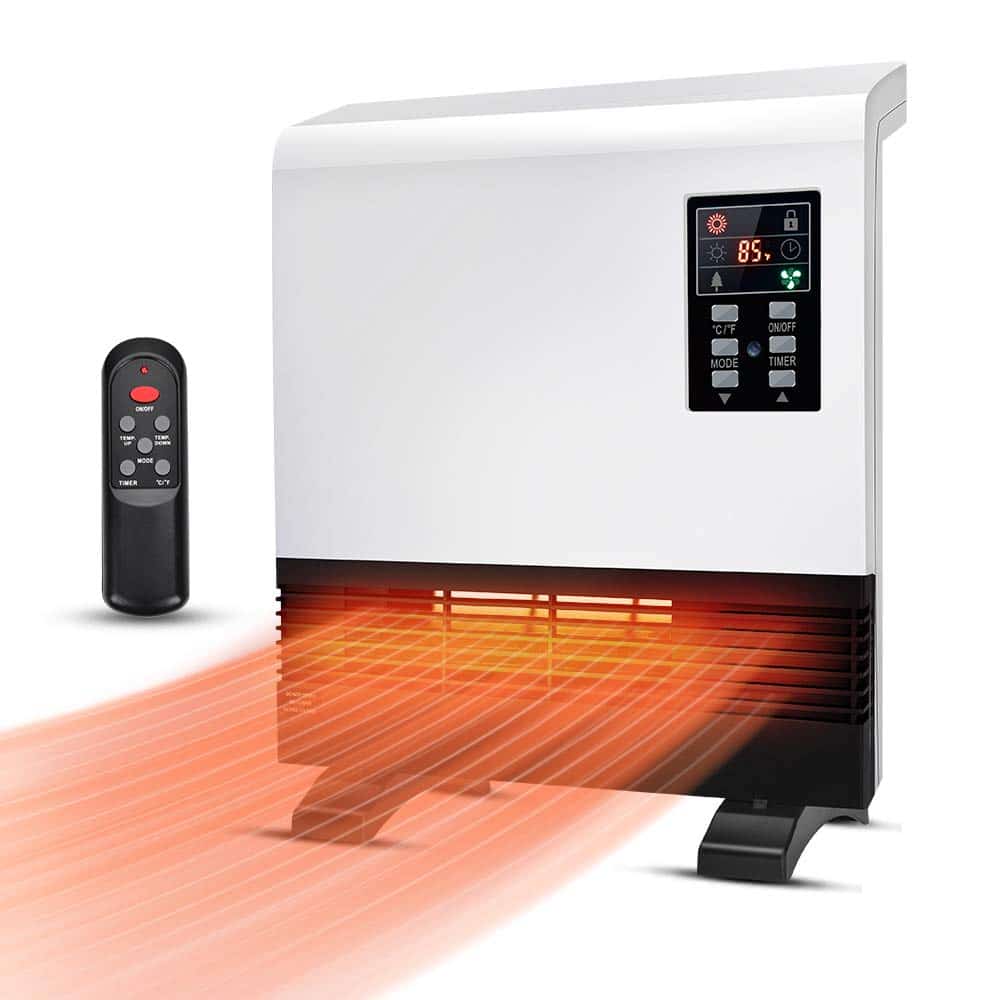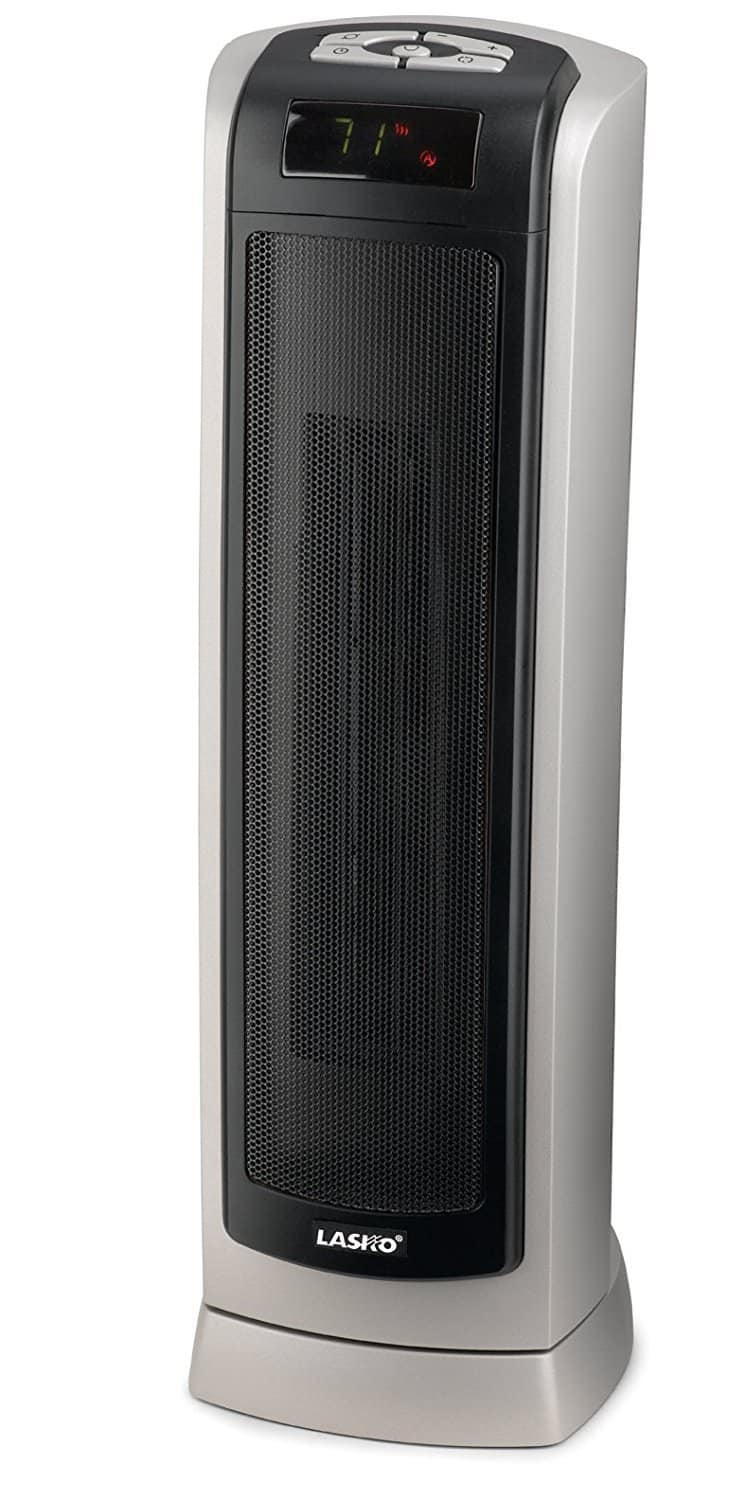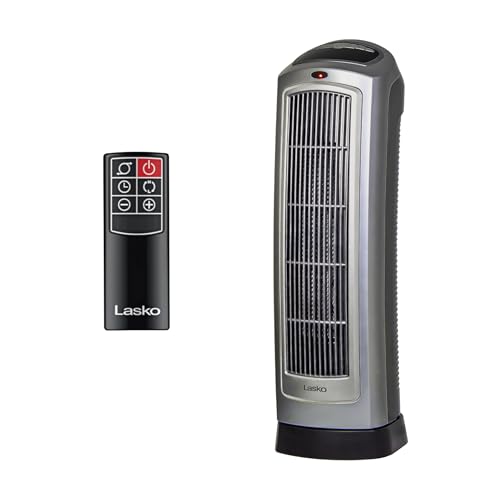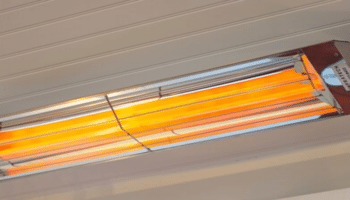We’ve all owned one of those heaters that seems to just guzzle up electricity when you turn it on!
Having a small bedroom myself, I definitely didn’t want to waste money by keeping my furnace on just to stay warm. Instead, a space heater is a much better solution.
But what’s the most efficient small heater for a bedroom?
Generally, infrared heating is the cheapest way to heat a small space, since it uses up such little electricity. However, an Oil-Filled Heater with a digital thermostat is also a great choice for a small room. Both heaters don’t use much electricity, and can maintain a temperature well.
While that’s the summary, I’m going to dive into a lot more detail. There’s a few intricacies (and tips!) to cover when it comes to heating a small space. If you’re interested, then read on…
First off: Watt’s Up, Doc? – Understanding Wattages
This is common knowledge to some, but wattages are something I never used to understand when I was younger. I just want to give a quick description here.
Essentially, the cost of running a heater depends on its wattage. Wattage is how many watts (electricity) an appliances uses per hour. To get the highest efficiency, we want the lowest wattage needed to heat our space.
Now, there’s two ways to achieve a high efficiency:
- Get a heater with a low wattage. Typically, infrared is a great option here as they use less power than standard heaters. (More on this below). However, there’s also the option of…
- Get a powerful heater with long-lasting heat and a thermostat. Use full power to heat the room quickly, then maintain the warmth by using a low powered mode.
Note: The wattage is the electricity usage on the highest setting. Often, using an appliance on a low setting will only use 1/3 of the watts per hour of the maximum setting.
Most Efficient Heaters for Small Rooms
Let’s tackle the different types of heaters individually. In this article, I’ve walked through the following heater types which can all be ideal for a small space:
- Oil-Filled Heaters
- Infrared Heaters
- Ceramic Heaters
- Space Heaters
I’ve also made recommendations for a great heater of each type. This is based on more in-depth reviews we’ve done on each type of heater (from the links above).
Here’s a quick summary of the top recommended models of each type:
Oil-Filled Heaters
For a small space, an oil-filled heater is probably your best bet for efficiency.
That’s because of how they work. Basically, they work to heat up some viscous, heat-retaining oil within the heater. Once hot, the oil is amazing at holding on to it’s heat.
What does this mean? Once hot, an oil heater will give you hours of heating using only low power to maintain the warmth.
Unlike other heaters, the heat from an oil-heater will last and last. This also makes them perfect for bedrooms. Turn them off right before you go to sleep, and the room will only slightly cool over the next few hours.
However – be aware this only really works on models with digital thermostats. Without a thermostat, the heater can’t use an ‘eco-mode’ to switch itself onto low power once it’s hot. You can still do this manually, but it’s nowhere near as comfortable!
One last thing to note – oil heaters are completely silent! Unlike noisy fan heaters, these are perfect for small bedrooms. They’ll let you get a full night’s rest, without having to choose between cold or noise.
Oil-Heater Recommendation: PELONIS
In-case you’re shopping for a heater, I want to include my top recommendations for each type. These are based on tons of research for when I’ve looked at oil-heaters vs electric heaters, the best oil-heaters, and the cheapest space heaters to run.
For oil-heaters especially, this PELONIS model is a stand-out recommendation. It’s a fantastic all-rounder which has everything you need.

As well as having a great looking design, it is by far the easiest heater to use. It has the most heat settings out of all the models I reviewed, and the controls are clear as day.
It’s also one of the few models to come with a remote control. I can’t understate the joy of being able to adjust the temperature on the fly, without even getting out of bed!
Check out my review of the best oil-filled heaters if you want a full review, or check it out on Amazon:
- [Efficient Heating & Multiple settings] Three heating options (900w, 1500w, mode) and five temperature settings (65F, 70F, 75F, 80F and 85F) to achieve customized temperature settings with maximized...
- [Portability] 4- swivel Caster Wheels capable of 360°rotation provides easy portability to move your Polonis space heater from room to room.
- [Safety Features] Power indicator light lets you know the unit is ON, built-in safety, over-heat protection and tip-over safety switch shuts heater off if accidentally knocked over.
Infrared Heaters
Infrared heaters will always be the cheapest to run – providing the most efficient heat.
Due to the way they work, they naturally need less electricity to heat a room than a space heater. (By heating objects, instead of the air). The heat is also more durable, and won’t disappear if there’s a cold breeze from the door opening.
Many people are worried about infrared being dangerous – but it’s not at all. In fact, I’ve written a full guide covering everything to do with infrared heating safety. The short answer – yes, it’s safe! Just treat as you would any other heater.
Here’s a quick run-down of the advantages by a Scottish Infrared Panel Company:
As with oil-heaters, infrared heaters are completely silent. So again, if you’re shopping for a bedroom heater then these are ideal. Some of them will have a bit of an ‘electric’ noise as they switch on, but they’re completely silent once they’re warmed up.
Infrared Heater Recommendations: Many!
One of the best things about infrared is there’s so many options available. You can get an infrared heater in the form of:
- Standard tower heaters
- Wall heaters
- Panels on the wall
- Artwork (!)
- and even mirrors!
The technology is getting such that they can put a heater in almost everything.
But if you’re just looking for a quiet and efficient infrared heater for a small room, I’d recommend this model by HeatStorm.
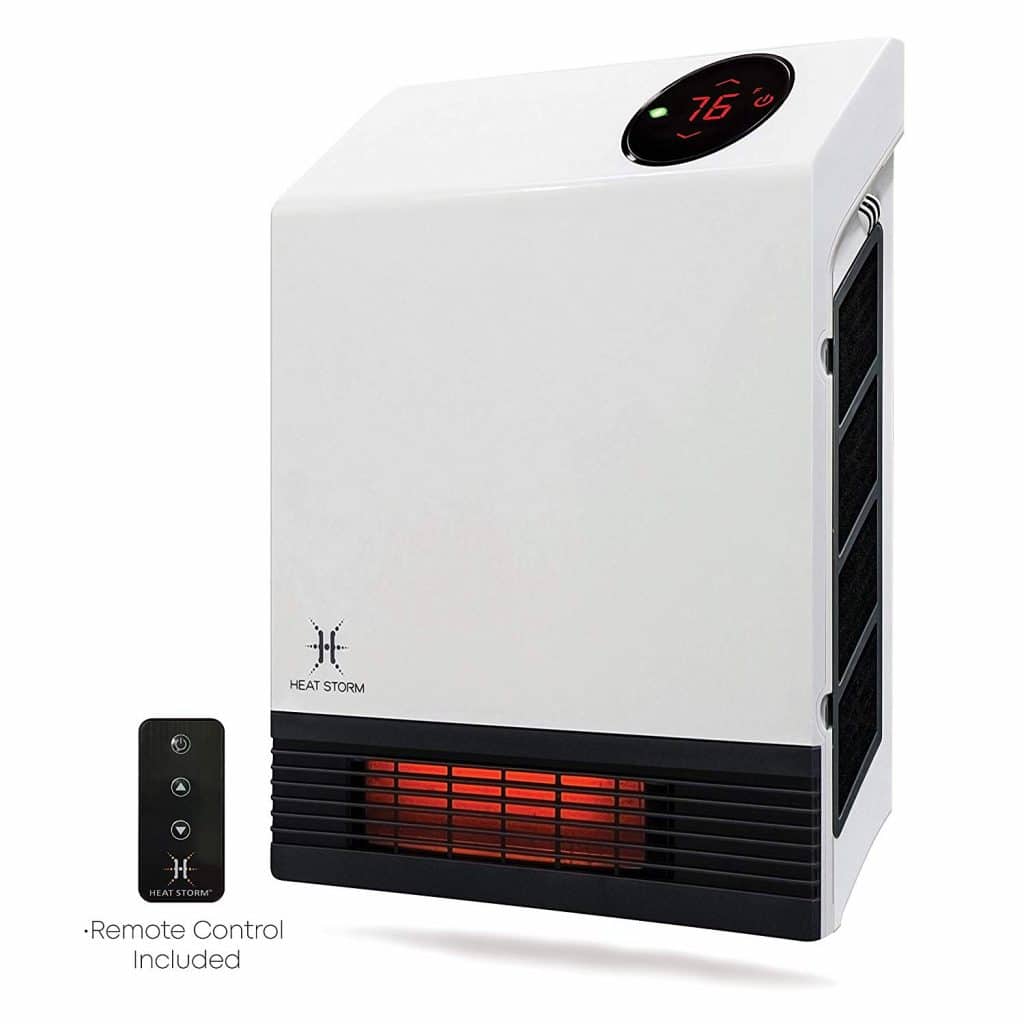
HeatStorm do a great range of heaters, with many being both wall and floor heaters. They’re also modern and connected, meaning you can use a remote control or – in some cases – control it from an app in your phone!
And since there’s no moving parts, it’s extremely rare for an infrared heater to break or have any maintenance issues.
- EFFECTIVE HEAT - Our infrared space heaters warm objects instead of just the air! This will help your room stay warm even after the heater turns off.
- SAFE TOUCH GRILL - That’s because our grills are made out of material that doesn’t burn skin. Our heaters also automatically shut off power if it tips over.
- MODERN DESIGN - wall mount design means you don't lose floor space. Perfect for bathrooms, bedrooms, kitchens, offices and more
Ceramic/Space Heaters
These are your standard heater types – coming in at the cheapest up-front cost. There’s a gazillion models to choose from, and with all that competition the prices have been driven way down.
That said, they’ve still not solved the basic issues with these type of standard heaters.
The main issue? Bad efficiency! Although ceramic heaters (and other general fan based heaters) are great at quickly heating a room, they suck at keeping it warm.
Since they only heat the air, a cold draft blowing in will sweep out most of the heat. Plus, the heat dissipates quickly in general. This means the heater needs to stay on higher power for longer, unlike an oil-filled heater.
Not only that, but generic space heaters also tend to work using a fan, which means they can be pretty loud when operating. Which isn’t great if you’re looking to heat a bedroom, or just prefer peace and quiet!
In general these types of heaters are a quick-fix for a cheap price, but you’ll tend to regret it in the long run! They’re definitely not the most efficient, but I wanted to cover them since they’re the most common.
Ceramic Heater Recommendation: Lasko Quiet Tower Heater
As far as ceramic heater’s go, my top recommendation would have to be this model by Lasko.
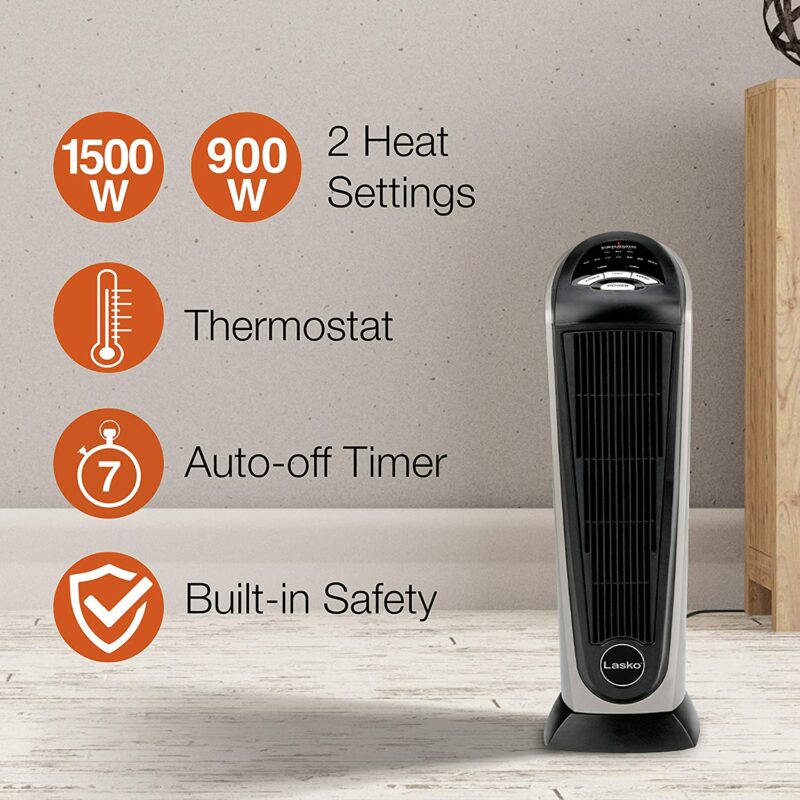
It’s a low up-front cost, and you’re getting a fully modern, capable appliance.
The digital thermostat means it can reduce the heating costs once it’s hit your ideal temperature. It’s a generally solid all-rounder and one of the best in terms of tower heaters.
There’s just no getting around the higher (and louder) running costs of a heater like this compared to an infrared or oil heater in a small room.
- 2 QUIET SETTINGS: This electric space heater features 2 quiet heat settings (high heat and low heat), plus an adjustable thermostat that will maintain the temperature in the room. The optional...
- REMOTE CONTROL: Use the multi-function remote control to turn the heater on/off, set the timer, turn the oscillation on/off or adjust the thermostat. For an added convenience, there is storage for the...
- ADJUSTABLE TIMER: This tower space heater features an auto-off timer function. Set the timer from 1-8 hours (in 1-hour increments) and the heater will automatically turn off after the selected timer.
Mini Heater Recommendation: Vornado Vortex Heaters
Lastly, I just wanted to include this little trooper of a heater. It’s made by Vornado, who I have to admit I have a bit of a penchant for (they’re very unique, so I did a rundown of the Best Vornado Heaters, and it’s one of our most popular articles!).
It’s tiny size makes it great for a small room. While it’s not a cornerstone model, it’s still got the quality you expect from a company like Vornado. The ‘cyclone’ type fan spiral bounces the warm air from one wall and let’s it rebound around the whole room.
If you’re after a quick-fix to heat your small room, I think this is a fantastic (and quite fun!) option.
Infrared vs. Oil vs. Electric: Pros & Cons
Deciding on which heater to go for can leave some people stuck. They’re all good options – especially between infrared or oil heaters for a small room. To help, I’ve put together a big table filled with all their pros and cons below. I hope it helps in making things a bit clearer!
| Pros | Cons |
|---|---|
Standard Electric Fan Heaters |
|
| Cheaper - With such a mass-manufactured product, there's tons of competition which means cheap prices. Great if you're looking for a quick bit of extra heating power. | Quick Heat Loss - Since these heaters rely on spreading heat through the air, any bad insulation or drafty windows will make you lose the heat fast. |
| Faster - Electric fan heaters heat up a room in minutes. Their fans quickly spread the heat throughout the air of the space. | Higher Bills - Due to the quick heat loss, standard electric heaters need to provide higher heat for longer - costing more energy. |
| More Options - There are thousands of thousands of models to choose from. You're more likely to find a model that is perfect for your taste. | Noisy - Especially for heaters with fans, there's always some level of noise associated with standard electric heaters. |
| Safer for Kids - Most standard fan heaters aren't overly hot to the touch, and the noise makes it more obvious that it's on (and hot!) | Inaccurate - Unless you've got a real high-end model, standard convection heaters aren't as good at keeping one constant temperature. They typically end up going a bit too hot or not hot enough, and need you to fiddle with the controls every so often |
| - | Bad for Allergies - Lastly, all that air movement brings up dust and allergens into the air. |
Oil-Filled Heaters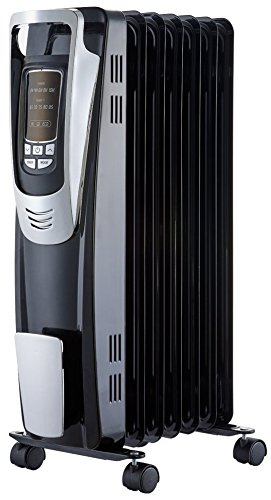 |
|
| Energy Efficient - These heaters are amazing at heat retention. Once they're at the desired temperature, they can save you a ton of energy only using low power to maintain the warmth. | Heavier - By relying on a heavy liquid over a larger surface, oil heaters often weigh over 20lbs. |
| Silent - Since all the heat comes from heating the oil, there's basically no sound with these heaters. Fantastic if you find the noise of a fan distracting. | Slow to Heat - It takes a while to get all the oil to the desired temperature - expect a 30 minute wait before the room's fully warm. |
| Safer for Fires - Fan heaters being blocked can lead to a fire hazard. Oil heaters are much safer, and don't have fire risks if curtains/clothes are *accidentally* left on them. | More Expensive (Up Front) - Typically, these heaters cost a fair bit more than standard electric fan heaters. That said, they should also save you money in the long run. |
| Accurate - Thermostats on oil-heaters tend to work really well, and are included in most models. Oil heaters are great if you appreciate a continous, constant temperature. | |
| Lasting Heat - Thanks to the high heat retention, an oil heater will stay hot for hours after it's switched off. Great for energy savings, and at night. | |
Infrared Heaters 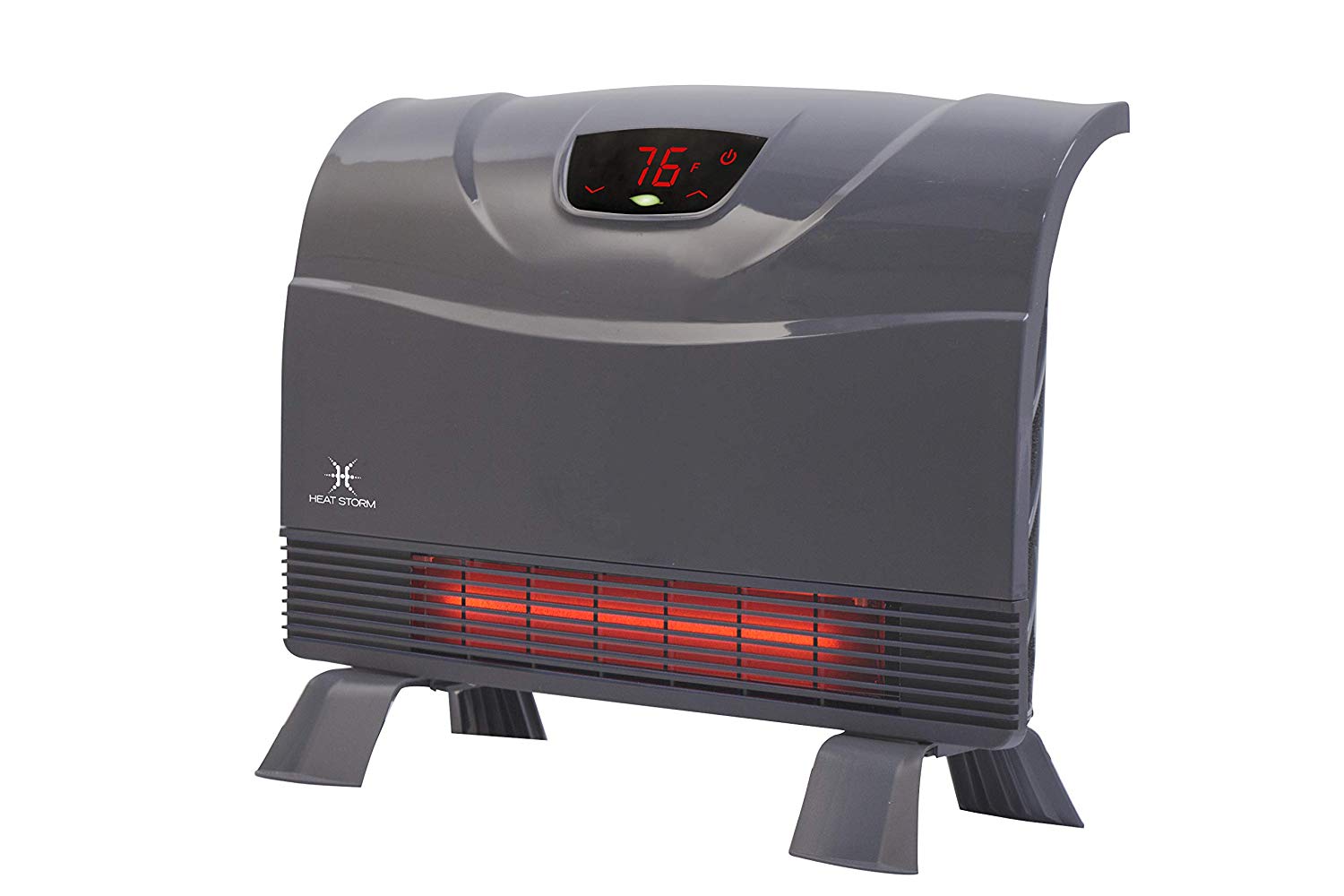 |
|
| Cheap to Run - Infrared heaters are typically the cheapest type of heater to run. They use less watts in general, and don't need to work extra hard if a space is draughty. | Only on/off - One downfall of infrared heaters is you can't quiet control the temperature. It's typically either just on or off, and with only 2 or 3 power settings. This can make things tricky if you're really looking for a perfect room temperature. |
| Silent - Aside from some heating noise on start-up, infrared heaters are mostly silent. Perfect for bedrooms. | Can get hot / kids touch - Lastly, these guys do get really hot when on high power. If you've got any kids or curious pets, be careful! A great alternative is having them on the wall, out of reach of inquisitive hands/paws. |
| Heat Lasts - Since they heat objects and not the air, a cool breeze or an open door won't mean you lose all of that heat. | |
| Wall Options - There's tons of creative options for infrared heaters. The latest take are simple, minimalistic panels that sit on the wall and gently heat the whole room. They can even come as art pieces, or mirrors! | |
| Gentle, instant heat - One of the most satisfying things about these heaters is that they're both instant, but gentle. When you turn them on you feel the heat immediately, but that same heat doesn't then get too much (since the objects are warm, not the air). | |
Related Questions
Do small space heaters use a lot of electricity?
The electricity used from any appliance depends on it’s wattage. Generally, heaters do use a lot more electricity than other appliances. While a space heater may use 1500W, a large fan to cool the same space may only use 60W (25x less!). On top of that, space heaters use more than larger systems, BUT are more efficient for heating smaller spaces. (Heating a bedroom instead of the whole house).
Which type of heater is cheapest to run?
Electric heaters are all technically 100% efficient (all the energy they use is converted straight to heat). That said, some heaters provide more heat per unit of energy than others. Typically, infrared heaters are the most efficient, but oil-filled heaters have the longest lasting heat. For more details, see our guide on the Cheapest Electric Heaters to Run.

